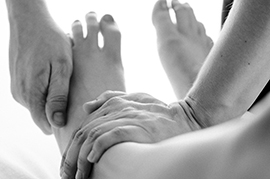Have You Ever Considered the Motion of Your Visceral Organs?
Perhaps Not- Visceral organs are not usually a commonly discussed subject, unless something feels wrong or a diagnosis states as such.
So I’d like to bring this subject up for common discussion so that the general public has a better basic understanding of organ dynamics. Visceral Manipulation, a specialized hands-on massage modality includes techniques that have moved us into the forefront of significant health improvement to affected organs and those to which it relates in a positive direction. With this said, visceral motion has become an interest of mine, and I hope this will open more minds to the benefits of this work.
My favorite Read: Osteopathic concepts discussed in Jean-Pierre Barral’s book Visceral Manipulation give us a whole new outlook on health and wellbeing by teaching us to listen and address visceral restrictions by supporting self-correction within the appropriate system. This book dives into testing and resolving adhesions and fixation so that the body can function more optimally.
Life is movement, and the structures in our bodies need to flow in their organic waves internally if to function properly. The two movements that I learned about and work with are:
1. Mobility- During the movement of diaphragmatic motion, the diaphragm drops with inhalation. The organs in that area operate in multiple planes, each with dynamic basic patterns. Each organ has its own unique way it responds and relates. The heart and cardiac motion dance with the the the other systems as well. Blood rushing and circulating nourish and stir. And not forgetting digestion- peristalsis sends its powerful waves throughout the visceral container along with the Craniosacral Motion and such. With all these systems working together, the organs, when healthy move in optimal patterns to support the whole body. Adhesions can lesson functioning.
2. Motility- These are the intrinsic movements that are independent for each organ. With motility, the axis and directions are created from the beginning of development. There are two phases of motility: 1. expire and 2. inspire. This is a much more quiet type of movement that deserves more mindful attention to evaluate the axis and amplitude. When examining motility, one begins by listening to pairs of organs with a very light touch.
Let’s take one organ briefly into account. The example, the liver which is the largest digestive organ, can be helped to increase energy. Mobility and motility testing can give show indications of restrictions which affect not only the liver itself, but most likely the other organs nearby.
By flushing out the liver, metabolism can improve and one feels more vitality.
Usually Visceral Manipulation can be inserted into your regular massage routine. A normal session for one organ pair and related issues take about 20 minutes or so.
At Lighten Up Therapies, I like to integrate some of this work into the Craniosacral Sessions as they both seem to work hand in hand together. They both require a “listening” and supportive measures to help the body to self heal.
If you are interested in this type of work, please check with:
http://www.barralinstitute.com
My practice uses the basics, but I am happy to help you find the best resources if you call at: 614 372-6598 with a free 15 minute consultation.
Sharon Hartnett CST and LMT
740 966-5153


